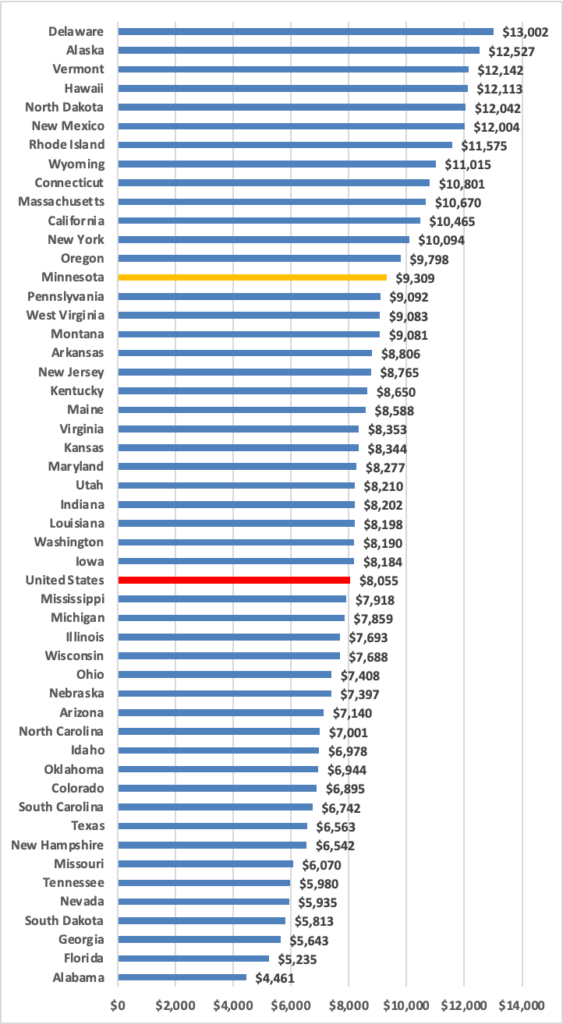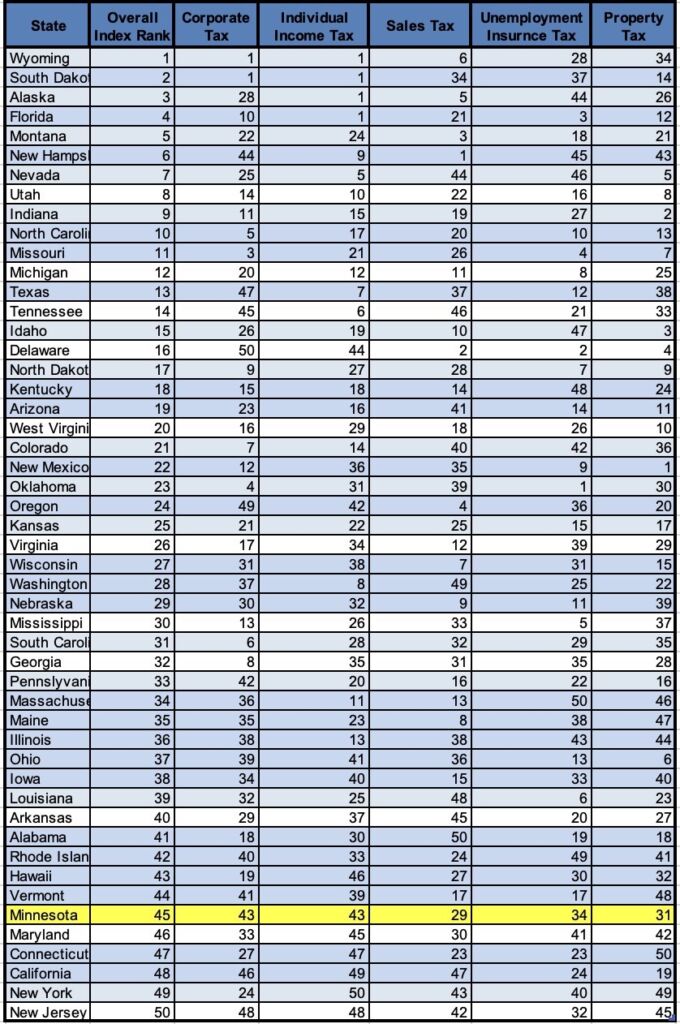How Minnesota taxes compare: A 2023 update
Since the Minnesota Management and Budget announced a historic surplus in November 2021, American Experiment has called on legislators to give that money back to Minnesotans through permanent income tax cuts. However, despite the surplus standing at $17.6 billion, DFL lawmakers in both the Senate and House have not proposed any permanent income tax cuts — outside of exempting social security. Instead, they have proposed to expand tax credits, while at the same time raising taxes and fees on Minnesotans.
We have argued time and time again that Minnesota is a high-tax state, which does not bode well for the future of our economy. To attract skilled workers, as well as investments, Minnesota lawmakers must make our state a more attractive place to work and do business. To a large extent, that starts with cutting taxes on individuals and businesses.
With the legislature about to come to an end without meaningful permanent tax relief in sight — at least not for Minnesotans most burdened with high-income taxes — it is important to reiterate just how crushing Minnesota’s tax system is when compared to other states.
One report that gives good data for comparison is the Tax Foundation’s Facts and Figures. The report, which is produced annually, estimates state and local taxes in per-capita terms and as a proportion of income, painting a clear picture of tax burdens among the states.
A 2023 update
In their 2023, update, the Tax Foundation noted that in 2021, the Minnesota state government collected about $5,570 per resident in taxes. This is higher than the national average of $3,800. It is also the fifth-highest rate among the 50 states.
Figure 1: State tax collections per capita, 2021

Unlike most states, tax collections in Minnesota are more centralized. So when local taxes are added, Minnesota does fall down the list slightly. However, its tax burden still remains among the top.
In 2022, Minnesota’s total tax burden per capita was $7,760. But compared to other states, it is the twelfth highest total tax burden per state. And as a proportion of state income, state and local taxes took up 12 percent of total state income. This is higher than the national average, and the twelfth-highest rate in the country.
Figure 2: State-Local Tax Burden as a Share of State Income, 2022

Minnesota is also generally more heavily reliant on income taxes than other states. So when other state revenues like fees are considered, our state tax ranking does fall slightly, but still remains among the top. In 2021, for example, total tax revenues per resident were $9,300. This is nearly $1,000 higher than the U.S. average.
Figure 4: State Tax Revenues per Capita, 2021

Business Tax Climate
The Tax Foundation also releases an annual index of taxes that primarily affect businesses. These include corporate income tax, individual income tax, sales tax, unemployment insurance tax as well as property tax. The report analyzes each tax separately and also combines all of them to estimate and rank how friendly a state’s overall tax environment is to businesses.
In the most recent update, Minnesota ranked as the 45th best state for businesses. Our state performed particularly badly on income taxes. However, even on the other taxes, we were still worse than more than half of all states.
Table: 2023 State Business Tax Climate Index (As of July 2022)

To say that Minnesota needs meaningful tax reform — which we are unlikely going to see even with a massive surplus — is an understatement.